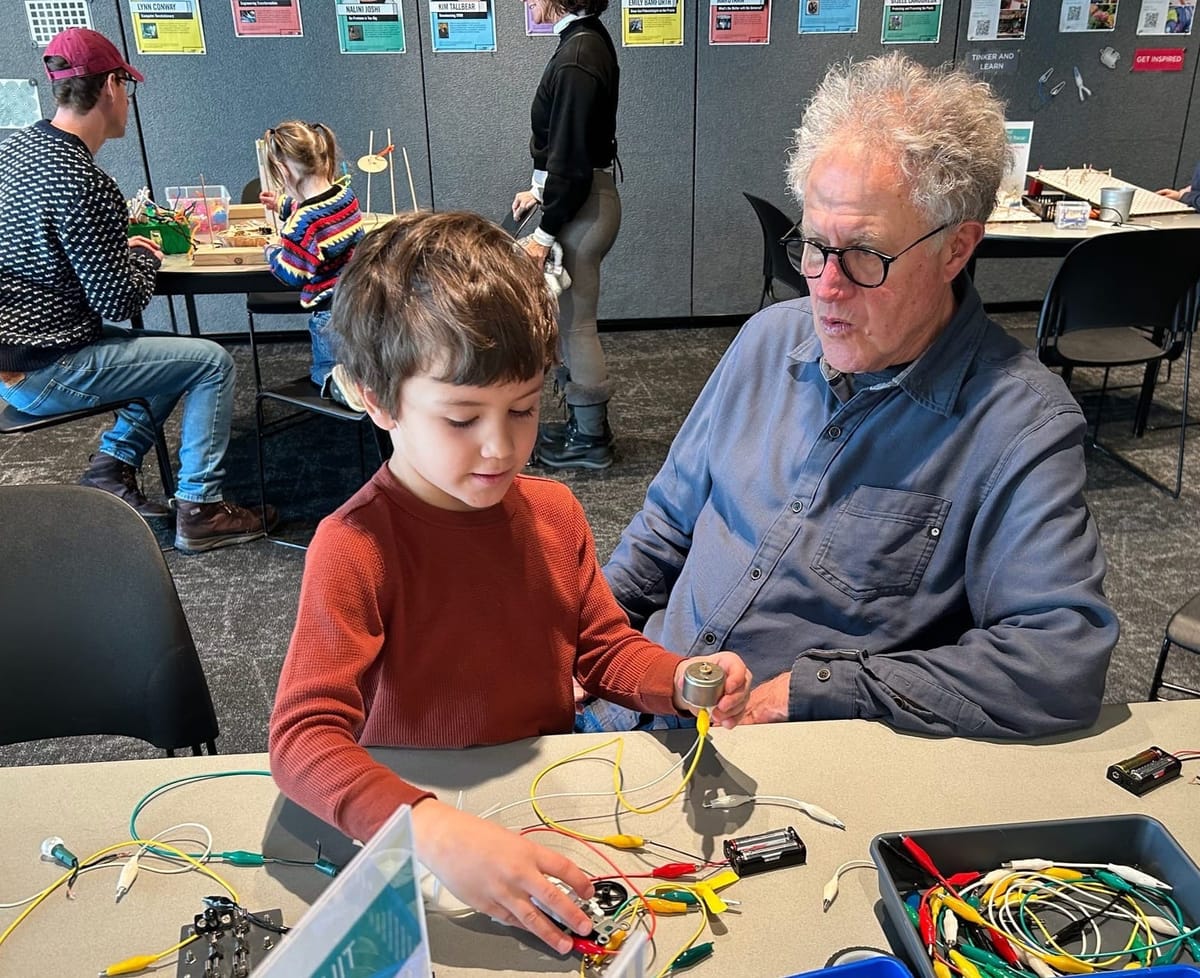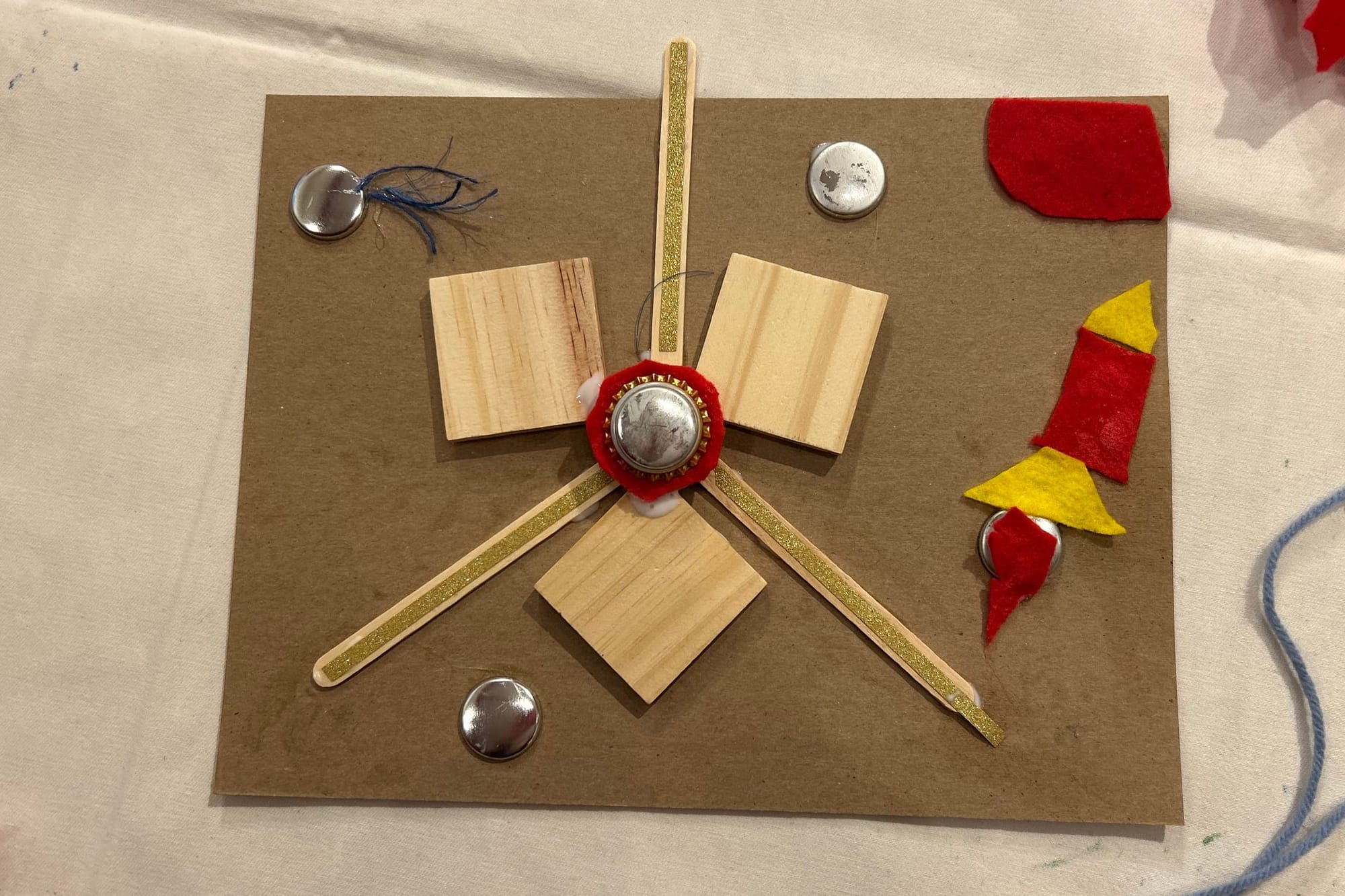Making 'special time' for your grandchild

I’ve been spending one Saturday a month at Mia (aka the Minneapolis Institute of Arts) with a grandson. Mia offers an amazing free opportunity called “Art Play!,” at which staff sets out supplies for creating in a particular medium—collage, assemblage, printmaking, ink, etc.—and lets children and their caregivers go to it. Our six-year-old grandson and I worked for two hours (!) on our assemblage creations, while he made comments like, “I love art! No one can tell you what to make!”
Special one-on-one times like this are life-giving for the grandparent and a chance for a grandchild to have fun or learn something. The trick is finding the activity that catches a given child’s interest—and your interest at least enough that you can be a cheerleader for the child. In my experience, it’s easy to find a match when they are toddlers or preschoolers: At that age they get excited by just about anything. But school age kids are choosier—you’ll be looking to fit into what the children want to do, rather than vice-versa. That and you have to coordinate carefully with the child’s family, as time gets limited once they are in school.

Finding the right fit
Here are four general tips for finding an activity your grandchild can click with:
• Know your grandchild—observe what gets them excited, what they stick with, what they talk about. At a science museum hands-on activity recently, one grandson was excited about making electric circuits to turn on a light or to make a buzzer sound. At home, this meant digging out a box of Snap Circuits (garage sale find!) https://elenco.com , which fascinated him for hours. Now, his excitement about circuitry will help us find our next venture.
• Ask them what they want to do, or ask their parents. I was recently stuck about what to offer for one-on-one time with eight-year-old grandson. But the answer was immediate and the same from the parents and the grandson: Outdoor pickleball! (Read: Free.) So we’re dusting off our rackets (it takes Grandpa and me both to keep up to grandson).
• Keep an eye out for possibilities. Museum and libraries may have free or low-cost options, from free visit days to classes. Some retail shops also offer classes; if you’re lucky enough to have a local children’s bookstore, they may offer readings. Local parks may offer a sport activity you can do together—ice skating and pickleball are two activities we’ve enjoyed with our grandchildren. Neighborhood fairs, parades, and festivals are often grandchild-and-grandparent friendly, too.
If you’re willing and able to spend more, possibilities increase, of course. Plays, art classes, cooking classes, getting your nails done together…let your knowledge of your grandchild’s interests guide you.
• Experiment. If an activity succeeds, repeat. If it fails, move on. We’ve had some success stories—often these end up in the blog, like here and here and here. But we have semi-successes—as when a two-year-old grandchild would attend a family/child music class with us, but wouldn’t get out of our laps to participate—and failures, too, as when one grandchild had near-total disdain for an art-museum scavenger hunt.
• Food. Always food. After “art class grandson” and I finish our project of the month, our tradition is to go eat our box lunches, then buy a treat at the museum café. Sweeten the deal, so to speak. The lunch also gives us more chatting time, and the nourishment sets us up to spend a short time (15-30 minutes) in the museum, focused on whatever interests Child that day. Food is needed to fuel physical activities, too: Kids run and play way harder than you do! The offering doesn’t have to be a treat, of course—healthy food will do the job even better. But a little treat does add to the fun!